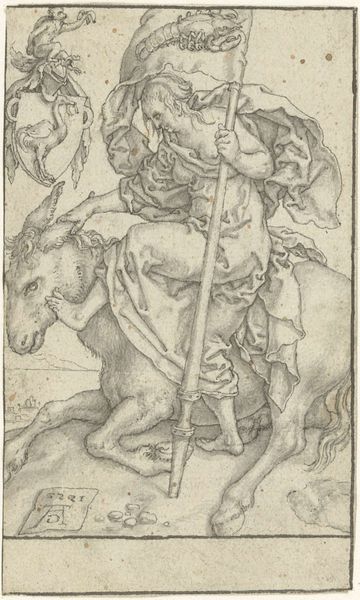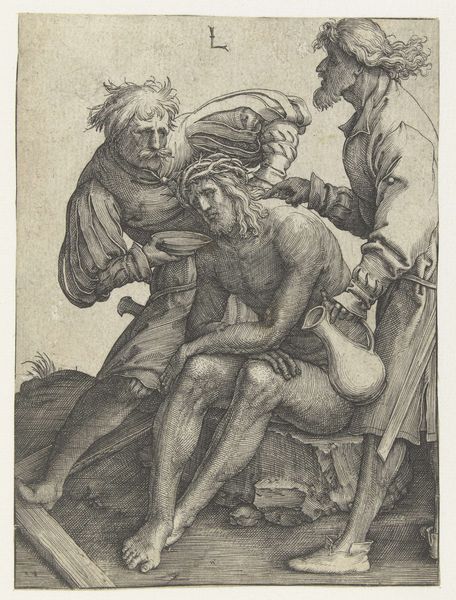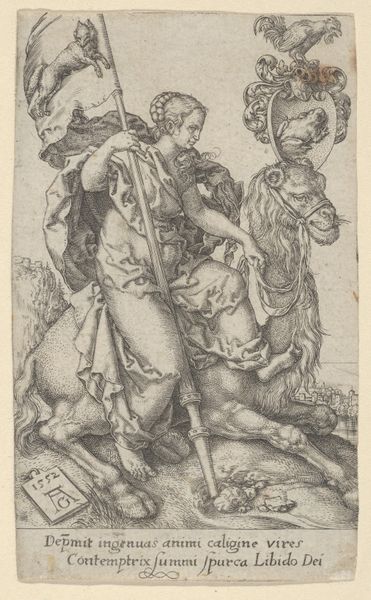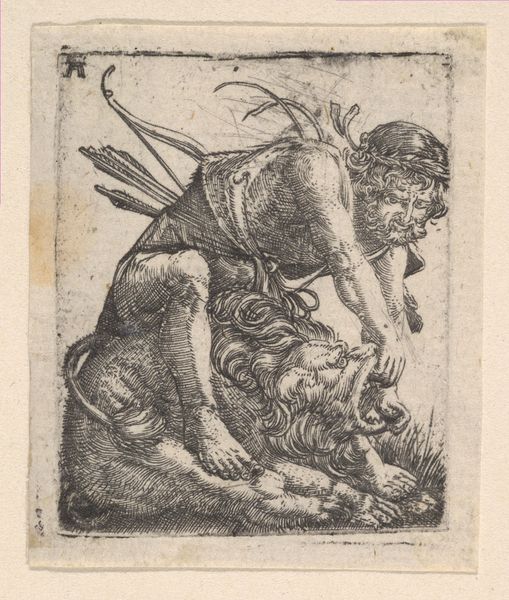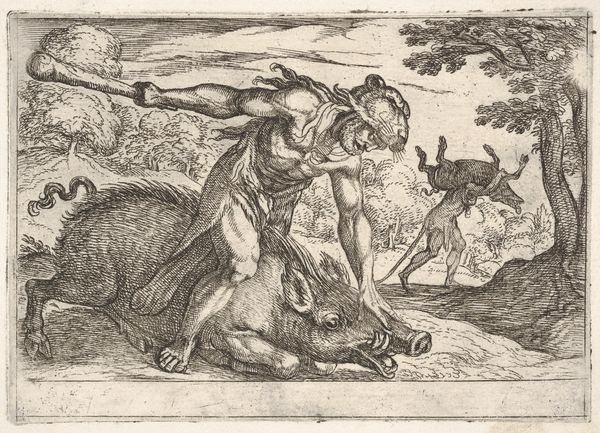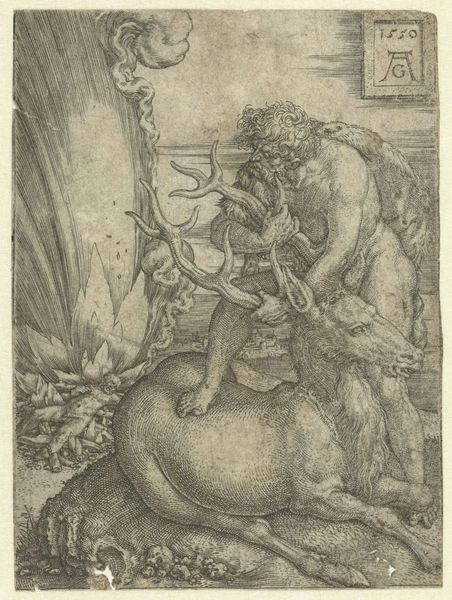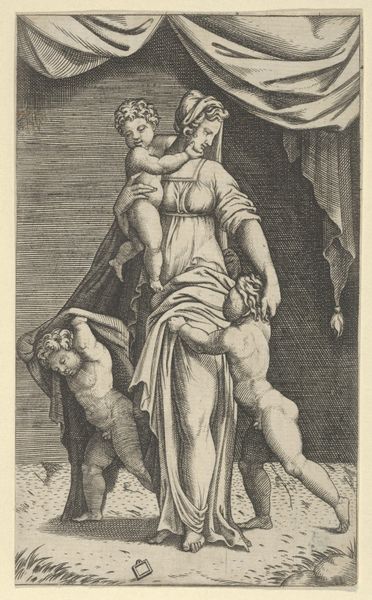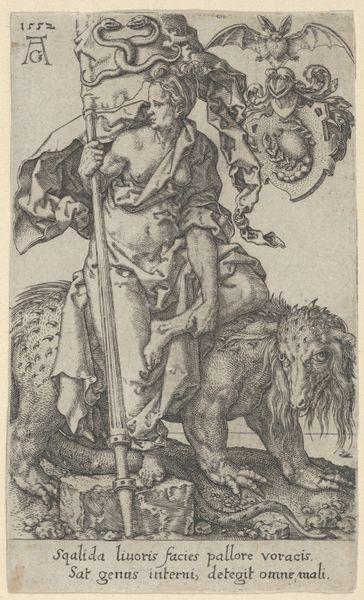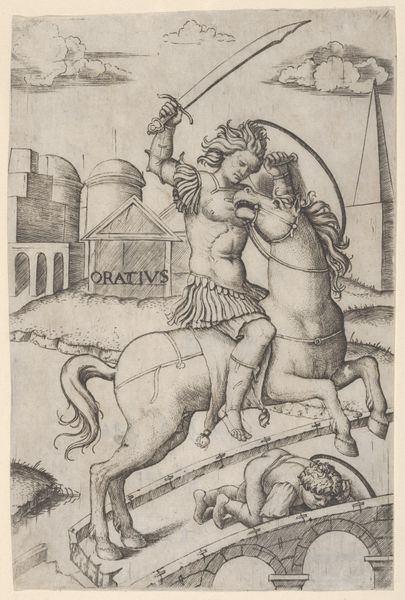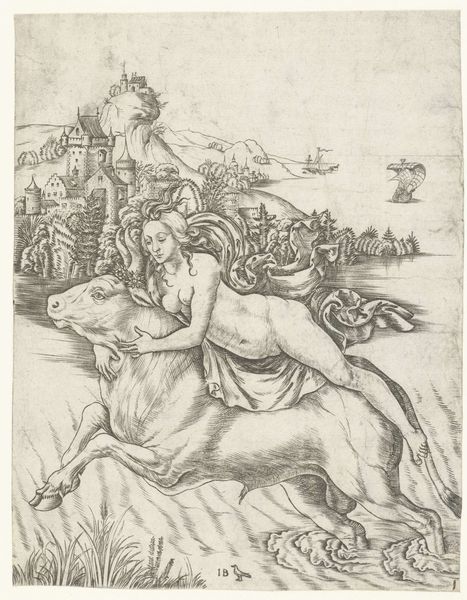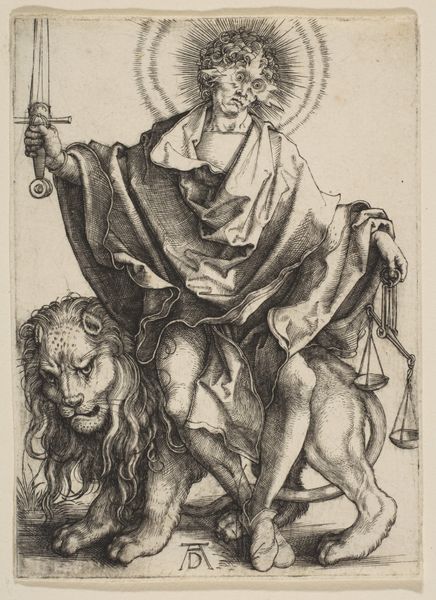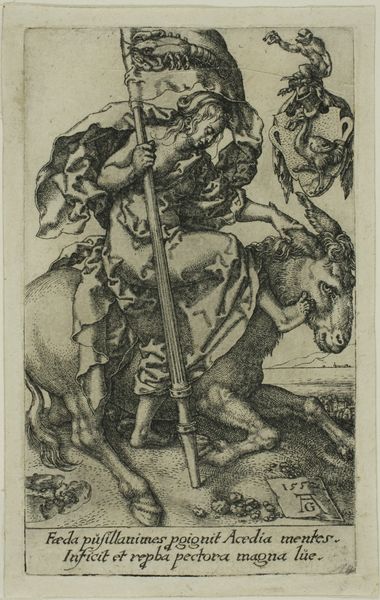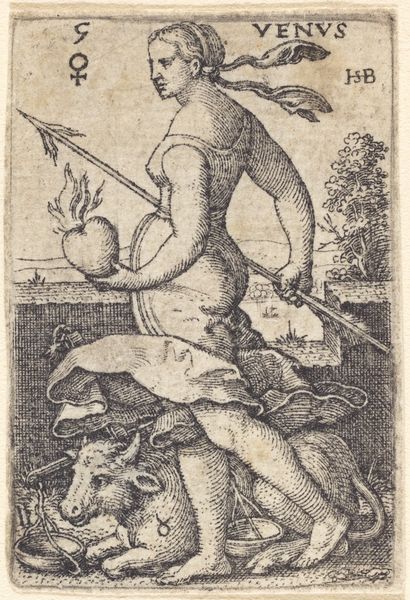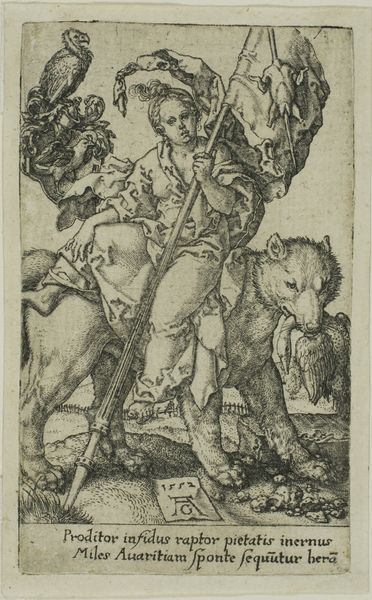
print, engraving
# print
#
landscape
#
figuration
#
history-painting
#
northern-renaissance
#
engraving
Dimensions: sheet (trimmed to plate mark): 13.7 x 10.5 cm (5 3/8 x 4 1/8 in.)
Copyright: National Gallery of Art: CC0 1.0
Israhel van Meckenem made this engraving of Samson and the Lion around 1435 to 1503. Engraving is a printmaking technique where the artist carves a design into a metal plate, usually copper, and then applies ink to the incised lines, printing the image onto paper. The process allows for fine detail, evident in the textures of Samson's hair and the lion's fur. Van Meckenem's skill with the burin, the tool used for engraving, enabled him to create a dynamic composition. Each line contributes to the overall effect, from the musculature of Samson to the ferocity of the lion's expression. Engravings like this were more than just artworks; they were commodities, produced in multiples and traded widely, playing a crucial role in the dissemination of images and ideas during the early Renaissance, and offering access to visual culture for a growing audience. Understanding the craft of engraving helps us appreciate the role of prints in society.
Comments
No comments
Be the first to comment and join the conversation on the ultimate creative platform.
